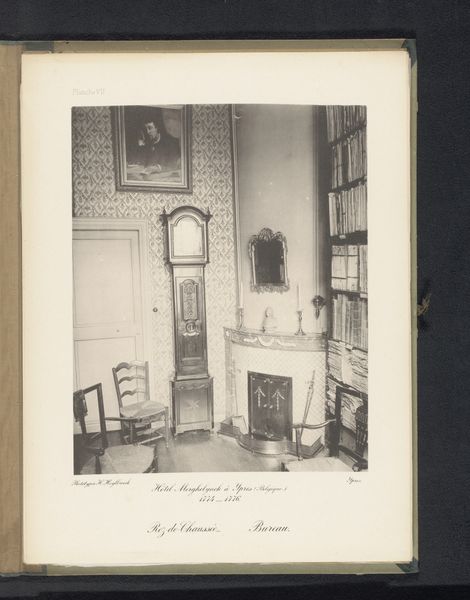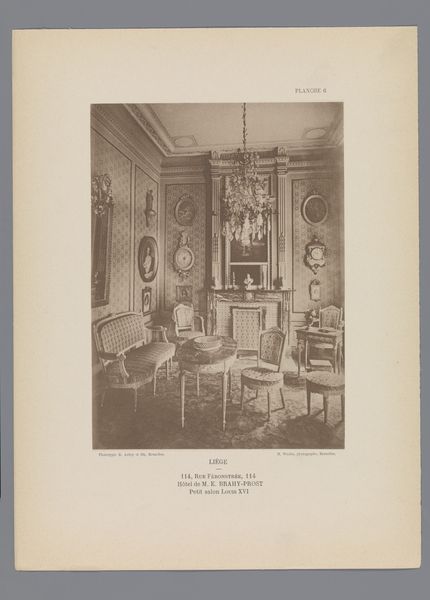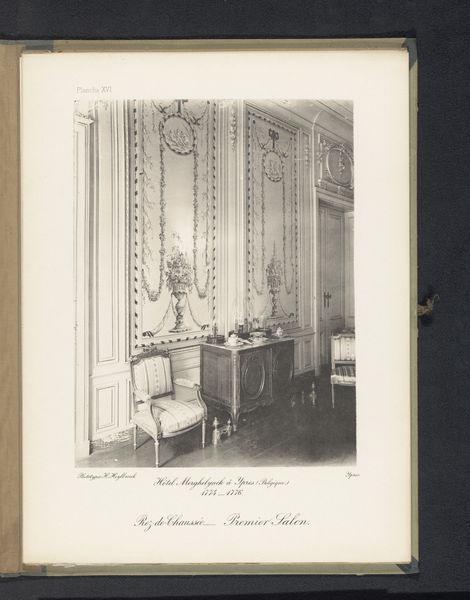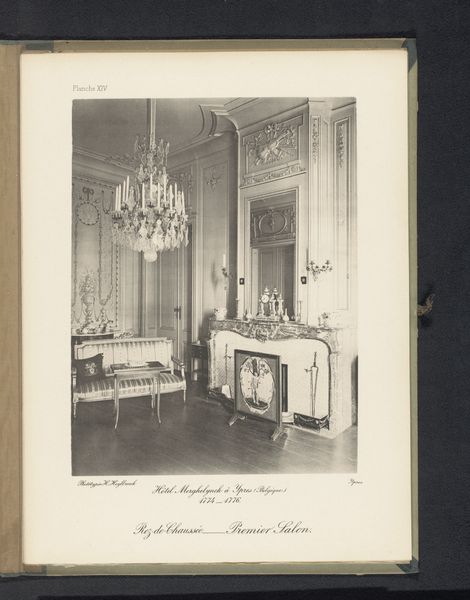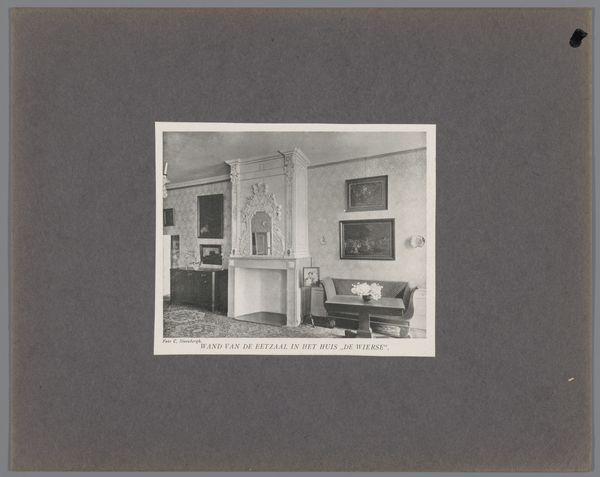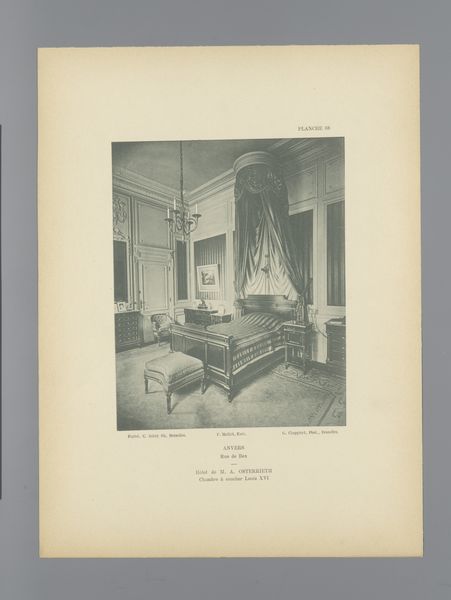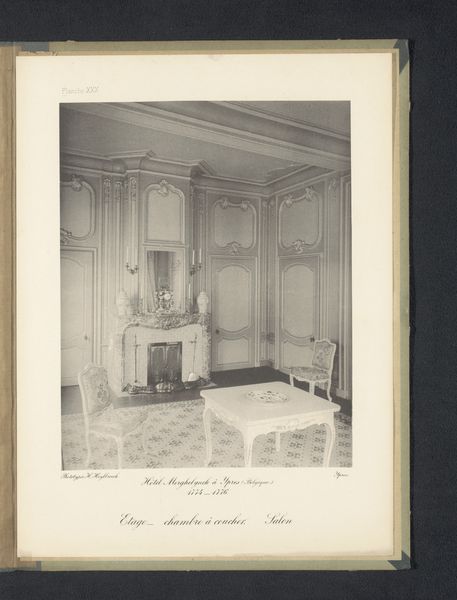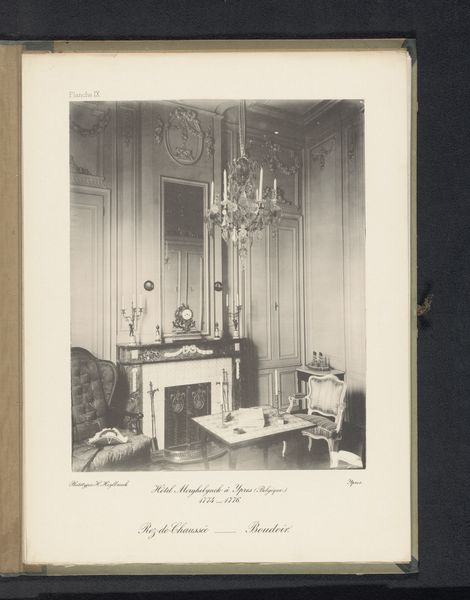
print, photography
# print
#
photography
#
cityscape
Dimensions: height 273 mm, width 210 mm
Copyright: Rijks Museum: Open Domain
Curator: We are looking at "Gang op de begane grond van Hotel Merghelynck in Ieper, België," taken before 1894 by Hector Heylbroeck. It is presented as a photograph and print. Editor: The photo depicts a grand interior, possibly a hotel lobby or a series of salons. It's quite formal, but the strong vanishing point also creates a sense of depth, drawing the eye. What strikes me most is the careful staging for the camera, and I wonder about the relationship between the materials on display and their consumption by the hotel's clientele. What do you make of this piece, especially considering its materials? Curator: Notice the sharp contrast of dark and light in the printmaking process here. Look how that contrast emphasizes the materiality of the objects – the sheen of the furniture, the texture of the drapery. Heylbroeck doesn't just show us a room; he meticulously catalogues its contents, drawing our attention to the labor embedded within each object. The Hotel itself is a site of commerce. It's a hub for material exchange. Does it seem to you, that Heylbroeck might be subtly critiquing or celebrating this display of wealth? Editor: That's interesting. I hadn’t considered the possible critique. Perhaps the clinical precision with which he captures these materials implies a certain detachment from the opulence. It raises the question, who is the photograph *for*? Who is invited to gaze upon and potentially consume this image of the hotel's interiors? Curator: Exactly. This work challenges traditional boundaries, inviting us to contemplate the material realities and the social conditions of both art making, commerce, and luxurious consumption. The means of production in both the Hotel and the photograph, underscore social stratification and the mechanics of consumer culture. Editor: That's a perspective shift for me. Seeing this image as less about aesthetics and more about a complex material relationship. I will start by thinking of images as historical documents that bring economic production to light. Curator: Yes. And understanding art's inherent connection to wider material contexts gives us invaluable new lenses for re-evaluating artistic merit.
Comments
No comments
Be the first to comment and join the conversation on the ultimate creative platform.


